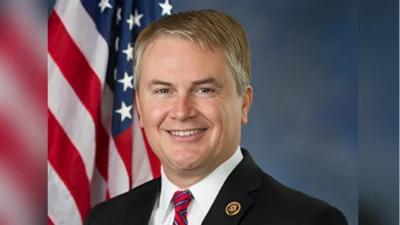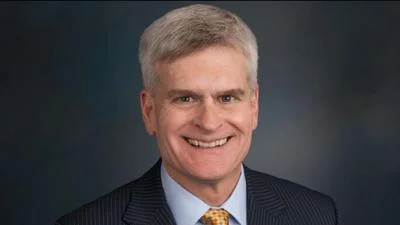WASHINGTON - President Bush today signed legislation into law that will provide substantial tax relief over the next decade to Americans across the income spectrum. The landmark measure provides the biggest tax cut in 20 years; it came from the Committee on Finance, led by Sen. Chuck Grassley, outgoing chairman, and Sen. Max Baucus, until this week the ranking Democrat.
“This bill will help struggling families make ends meet," Grassley said. “It will help parents and students afford a college education. It will let a son who finally earns a good paycheck after years of work to better provide for his aging mother. The ways to use this refund vary as much as the number of households across America."
The Senate passed the House-Senate conference report on the Restoring Earnings to Lift Individuals and Empower Families (RELIEF) Act of 2001 on May 26, on a vote of 58 to 33. The action came soon after House approval and cleared the legislation for President Bush’s consideration.
The final measure was based on what the Committee on Finance passed on May 15. After days of debate, the Senate didn’t adopt any amendments that substantially changed the legislation.
After House and Senate approval, a House-Senate conference committee ironed out differences between the Senate- and House-passed tax relief measures. The conference committee agreed on a package, clearing the way for final votes by the House and Senate. Final congressional approval met Senate leaders’ goal to give President Bush tax cut legislation by Memorial Day.
Grassley said the RELIEF Act was built upon bipartisanship; consultation with many senators, including all Finance Committee members; and the recognition that nobody in a 50-50 Senate can get everything they want, but maybe a majority can get something they can support. The conference report of the RELIEF Act includes:
< Affordable tax relief. The budget surplus is projected to exceed tax cuts every year covered in this legislation, from 2001 to 2011, with a comfortable margin. The ratio of surplus to tax cuts gets bigger toward the end.
< Secure funding for national priorities. The budget resolution takes care of this. That blueprint provides record levels of funding for education, prescription drugs and defense.
It pays down every dollar that is possible to pay down on the national debt over the 10 years of the budget resolution.
< Across-the-board cuts of individual income tax rates. It creates a new 10 percent rate and applies it retroactively to Jan. 1 of this year. The Treasury Department will issue rebate checks to American taxpayers to remit any excess taxes that have been withheld on their 10 percent earnings earlier this year. The rebate checks will amount to up to $300 for individual taxpayers, up to $500 for heads of households and up to $600 for joint returns.
The Treasury Department estimates Iowans this year will receive 974,000 rebate checks totaling $426 million.
The 28 percent, 31 percent and 36 percent rates will be reduced by three points over the next several years. The first one point rate reduction will take effect on July 1, one month from now.
Grassley said the first rebate checks and immediate rate reductions will provide a stimulus that the sluggish economy very much needs.
In addition, the 39.6 percent top marginal rate will drop to 35 percent. While the bill doesn’t go as far as the President and Grassley wanted, Grassley said the measure does address the hidden marginal rate increases caused by the current laws that deny deductions for personal exemptions and itemized deductions. Those laws will be repealed, thus eliminating these hidden marginal rate increases and removing another complexity from the code.
< Marriage penalty relief for families in which both spouses work and in which only one spouse works.
< Death tax relief and eventual death tax repeal. This recognizes that death shouldn’t be a taxable event.
< Expanded child credit. The bill embraces President Bush’s proposal of expanding the child credit to $1,000.
< Refundable child credit. The bill includes a new proposal that will allow the child credit to benefit working families that wouldn’t otherwise receive the child credit under current law because they have too little or no income tax liability. It will even go beyond offsetting the Social Security payroll tax for lower income taxpayers.
< Retirement savings. The legislation includes the Grassley-Baucus legislation that allows Americans to save more money in their retirement plans. It provides a special incentive for low- and middle-income savers. It encourages employers to offer pensions.
< Education savings. These steps include Grassley’s 12-year crusade to remove the limitation on the deductibility of student loan interest. The measure also raises the amount that can be contributed to an education savings account from $500 to $2,000.
< Adoption tax credit. This provision to encourage adoption is extended and expanded effective 2003.
< Tax incentives for employers to provide child care to their employees.
< An expansion of the dependent care tax credit, which assists families facing the difficulties of providing care for children and spouses with special needs.
Grassley said President Bush deserves major credit for his leadership on tax relief.
“President Bush planted the seed of tax cuts as candidate Bush, months ago," Grassley said.
“With cultivation in Congress, his seedling has thrived. Today, he ensured that Americans will reap a harvest of tax relief."
-30-
Source: Ranking Member’s News








